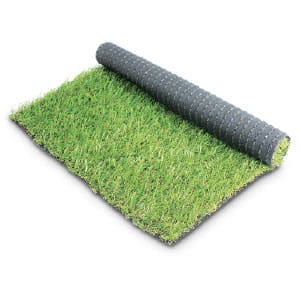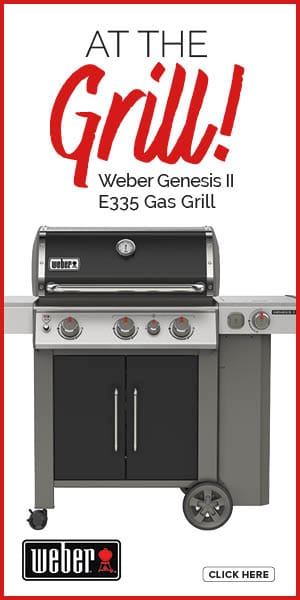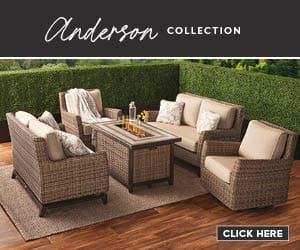Special Section // Home & Garden

Turf density and foot traffic are factors to consider in selecting artificial grass.
photo courtesy of Pregra Artificial Grass
Ground cover
Artificial grass is a smart and sensible choice
by laura tobias
Once the domain of sports fields, artificial turf is becoming a popular choice for homeowners, and for multiple reasons. Artificial grass saves water and reduces dust, insects and weeds. It doesn’t require the upkeep of a traditional lawn and dries quickly after it rains, making it user-friendly. Best of all, it always looks good, even in problematic areas, such as shady pathways and corners, under outdoor play spaces and in tiny courtyards.
“Our backyard is on a bit of a slope and the grass never looked good with our mastiff and kids and weather issues,” says Costco member Tyrone Harris, who installed PreGra artificial turf in his Southern California backyard last fall. “We’d be so embarrassed when company came that we’d ask them to please not look outside.” That changed the day the artificial turf went in. “I was out there grilling that first night. It’s given us an indoor–outdoor lifestyle, and I believe it’s added value to our home too.”
Turf selection
Several types of artificial turf are available in a variety of pile heights and color tones. Harris did extensive research before settling on his Costco product. “I talked to a lot of people and got four quotes over 10 months,” Harris says. “Our yard gets heavy use, and I needed a quality product.”
Many experts recommend that you start by choosing a manufacturer that offers UV protection on their product and backs it with a multiyear warranty. Next, consider the grass varieties found in your region and choose something that replicates what grows locally. A darker-toned fescue is commonly found in northern states, while in southern states closer to the equator, a lighter Bermuda grass is more common.
Then, manufacturers advise that you think about your personal aesthetic. If you’re after a tidy, fresh-cut look, a shorter grass with a firmer feel is best. If you want a luxurious look, a longer, softer and lower-density grass will give you that. Finally, consider your lifestyle and needs. Will your grass see heavy use, moderate use or no foot traffic at all? Will it be installed around a pool? Will it be used by children or a pet?
“The higher the traffic, the denser the product should be to ensure longevity,” says Tabitha Shirey, general manager of PreGra. “If homeowners associations [HOAs] are a concern, it’s important to remember that many HOAs have very specific guidelines regarding installing turf with a face weight over 70 ounces per square yard.” Shirey says PreGra’s Platinum 80-ounce products are the best fit for high-traffic areas and meet most HOA standards.
If HOAs are not a concern and traffic will be moderate, she says the Select 62-ounce products look amazing and plush, while the 46-ounce Bluegrass is their most economical landscape grass for low- to moderate-traffic areas. “And all of our products are pet-friendly, but our 48-ounce Pet Turf has a short and dense blade structure, which makes waste cleanup easy,” Shirey adds.
If pets are a consideration, choose turf with a fully permeable backing to allow liquids to drain properly. A permeable backing is also important if your turf will be around a pool or other areas where water splashes.
Cleaning tips
Once installed, artificial turf is easy to maintain, provided you follow a few simple steps. (For installation tips, see “Prepare, measure, roll.”) To keep it looking great, remove fallen leaves or branches before they become ground in; a leaf blower or lawn vacuum makes fast work of the job. In dry climates, rinse the turf regularly with a hose to remove dust and pollen. Clean spills promptly, blotting up with a towel and rinsing with a mixture of soap and water.
Let solid pet waste dry before picking it up; afterward, rinse the area with water. Liquid pet waste will drain out, but dousing with water afterward is recommended.
Finally, brushing the grass against the grain in high-traffic areas every few weeks will keep your turf like new for years.
Artificial grass is an easy way to improve your outdoor living space and keep it looking its best.
Weed control
Under the right conditions, any outdoor surface can nurture unwanted moss or plant germination. From time to time, seeds carried by wind or birds may fall on your artificial turf or where the turf meets walkways or stones. Rain may cause the seeds to germinate, especially in spring. If that happens, you can pull the weeds by hand or eliminate them with vinegar and water or your preferred treatment.—LT

© showcake / stock.adobe.com
Prepare, measure, roll
To DIY install artificial turf, here’s what the pros advise:
- Remove natural sod, weeds and 3 to 4 inches of topsoil.
- Lay a sub-base of gravel, exposed aggregate or road crush. Compact it so the material is even, graded properly and there are no dips.
- Measure your space and plan the placement of each roll. Always face the blades of grass in the direction of your vantage point. In the backyard, the blades should run toward the patio and house. In the front yard, the blades should run toward the street.
- Lay out the grass rolls on top of the gravel base as you would carpet, stretching and snugging the pieces together and cutting with a sharp blade. Secure with spikes.
- Top-dress small holes in artificial turf with infill sand for a more natural look and added comfort. Brush with a broom until all the fibers are upright.—LT
Laura Tobias is a writer based in the Pacific Northwest.
Costco Connection: Artificial turf, such as PreGra’s Platinum Bermuda (pictured above; Item 1059876), and other lawn and garden supplies are available in Costco warehouses and at Costco.com.



